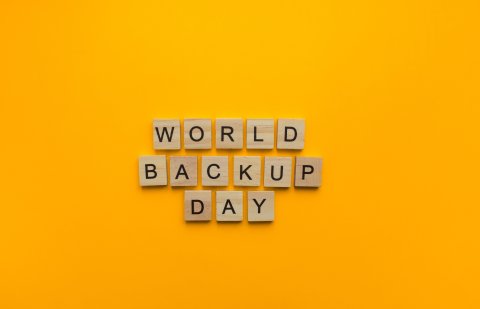
Take the pledge on March 31 to protect your most valuable digital assets. Don’t be an April Fool. Back up your files. Your future self will thank you.
In a world increasingly dependent on digital infrastructure, one accidental click, one failing hard drive, or one malicious ransomware attack can spell disaster. Imagine a photographer losing irreplaceable wedding photos due to a laptop crash, or a small business owner waking up to a completely wiped-out database. These scenarios, while terrifying, are all too real — and preventable. Enter World Backup Day, a global reminder that in the digital age, safeguarding our data isn’t just important, it’s essential.
World Backup Day is more than a yearly reminder — it’s a movement to instill digital resilience in a tech-centric world. Whether you’re a student, an entrepreneur, or an IT manager, data loss can hit you hard. But the good news? Prevention is simple. A few minutes invested in a solid backup plan can save you from weeks of regret and thousands in losses.
What Is World Backup Day?
Held every year on March 31, World Backup Day was established in 2011 by concerned internet users on Reddit. Purposefully scheduled the day before April Fools’ Day, the event carries a light-hearted but powerful message: losing your data is no joke. The campaign urges individuals and organizations to take a proactive approach to data protection by setting up and maintaining reliable backup systems. With 2025 marking new highs in cloud usage, mobile computing, and remote work, the sheer volume of digital data we generate daily is staggering. Simultaneously, the threats we face have also evolved: cyberattacks, phishing scams, natural disasters, and plain old human error. A recent industry report revealed that more than 40% of businesses that suffer major data loss shut down within a year. This isn’t just about IT hygiene — it’s about long-term survival.
Backing up data regularly ensures that even in worst-case scenarios, your digital footprint — and everything it represents — remains intact.
Not all data is created equal, but anything important, irreplaceable, or business-critical deserves a place in your backup plan:
- For individuals: family photos and videos, personal documents, school or work files, emails, and contacts.
- For businesses: client information, employee records, financial statements, source code, digital assets, and customer communication histories.
A good practice is to categorize your data into tiers: what must be backed up daily, weekly, or monthly.
Backup Strategies That Work
The gold standard is the 3-2-1 Backup Rule:
- Keep three copies of your data.
- Store it on two different types of media (e.g., hard drive and cloud).
- Keep one copy offsite or in the cloud to protect against local failures.
This approach helps protect against multiple failure points. For example, if your laptop dies and your external drive is lost in transit, your cloud backup ensures your data isn’t lost forever.
Backups & Cybersecurity: A Strategic Alliance
Cybersecurity and backups go hand-in-hand. Ransomware attacks are on the rise, and their impact can be catastrophic. Backups provide a crucial lifeline: instead of paying the ransom, companies can wipe affected systems and restore from a clean copy. Immutable backups — data that can’t be altered once written — are particularly effective in these scenarios.
According to World Backup Day press release, people now create and generate over 1.8 zettabytes of data per year. That’s a lot of data that we need to protect! Unfortunately, nearly 30% of people have never even backed up their data.
“I’m thrilled with the response to World Backup Day, and I hope it’s made a difference in people’s lives,” said World Backup Day founder Ismil aJadun. “We all know someone who has lost critical data, whether it was their videos, photos, music, book reports, or personal stuff. Hopefully this day will make everyone think about their situation, learn about the various options and get their files backed up. I hope that World Backup Day sparks conversations about the enormous task of saving our digital heritage for future generations.”
Tahawaultech.com spoke to the following industry experts:

Ezzeldin Hussein, Regional Senior Director, Solution Engineering, META, SentinelOne
“Data loss isn’t a question of “if”—it’s “when.”
This World Backup Day, proactive backups are your strongest defense against ransomware, accidental deletions, and system failures.
In an era of relentless cyber threats, businesses and individuals alike must ensure their critical data is secure, recoverable, and resilient. Whether through cloud-based solutions, offline storage, or immutable backups, a robust backup strategy is essential for business continuity and digital peace of mind. Take the World Backup Day pledge: Don’t leave your data unprotected—back it up today and stay ahead of tomorrow’s threats.”

Harish Chib, Vice President, Emerging Markets, Middle East & Africa, Sophos.
Harish Chib, Vice President Emerging Markets, Middle East & Africa, Sophos
In today’s digital-first world, data is the backbone of every organization and it remains a top target for cybercriminals. The Sophos State of Ransomware report reveals, 94% of ransomware attacks include attempts to compromise backups—57% of which are successful. This stark reality underscores the need for organizations to adopt a robust backup strategy that ensures data remains secure and accessible, even in the face of evolving cyber threats. On World Backup Day, we urge businesses to not only back up their critical data but also to safeguard those backups with strong security measures. A resilient defense requires a multi-layered approach, including proactive risk assessment, endpoint protection, 24/7 threat monitoring, and a well-practiced incident response plan. Cybercriminals are relentless, but with the right strategy, organizations can ensure that their data—and their future—remain protected.
Rob T. Lee, Chief of Research at SANS Institute
We talk a lot about backing up data. But here’s the question no one likes to answer: where does data go when it’s no longer needed?
It doesn’t just disappear.
Back in the day, I used to recover data from used hard drives. What I found were full digital lives left behind. Tax records. Business plans. Medical information. All still there. Unsecured. Forgotten.

Rob T. Lee, Chief of Research at SANS Institute.
Today, the situation is worse. Data lives everywhere now. In the cloud. On laptops. Phones. USBs. Shared drives. Devices we barely think about. The risk isn’t limited to old hardware sitting in a closet. It’s the active and forgotten data sitting on systems we no longer track.
When companies upgrade systems, shut down apps, or employees move on, what happens to the leftover data? Are we wiping it securely? Are we even keeping an inventory?
If you don’t know where your data is, you can’t know where it ends up.
On World Backup Day, yes, back up your data. But also think about what you leave behind. Because forgotten data is still out there. And it is very much recoverable.
Here are three ways to stop your business data from haunting you later.
- Create a Full Data Inventory – You can’t secure or delete what you don’t know exists. Start with a complete audit—track where data lives across cloud services, devices, backup systems, and even personal employee hardware.
- Build Data Disposal Into Every Offboarding and Upgrade – Whether it’s an employee leaving or an entire system being decommissioned, have a process to securely wipe or destroy data. This should be as routine as collecting a badge or laptop.
- Automate Retention and Destruction Policies – Use tools that enforce data retention rules. Data that’s no longer needed shouldn’t stick around for “just in case.” Automate secure deletion timelines and make sure sensitive data has a digital expiration date.

Ram Vaidyanathan, Chief IT Security Evangelist, ManageEngine.
Ram Vaidyanathan, Chief IT Security Evangelist, ManageEngine
On World Backup Day, we are reminded that protecting data requires a proactive and strategic approach. After all, data is arguably the most valuable asset for any organization. Effective backups are not just about storing copies of data—they are a critical component of disaster recovery and cybersecurity. It ensures rapid data restoration, minimizes downtime, and enables business continuity in the event of cyberattacks or system failures.
A risk-based approach to backups ensures that organizations prioritize their most critical data, aligning recovery strategies with business impact. This starts with a risk assessment to identify the most business-critical and sensitive data. From here, businesses must define Recovery Point Objectives (RPO) and Recovery Time Objectives (RTO) to establish limits to acceptable data loss, and maximum acceptable time for recovery. The overall goal is to build a resilient backup framework. Regular automated backups, offsite replication, encryption, and immutable storage are key to minimizing exposure to ransomware and data corruption.
In today’s evolving threat landscape, backup is an essential cybersecurity control. This World Backup Day, let’s reaffirm our commitment to data resilience by adopting robust backup strategies that align with security best practices and compliance requirements.





